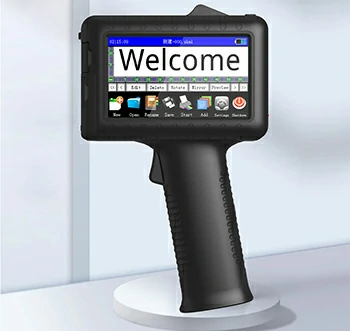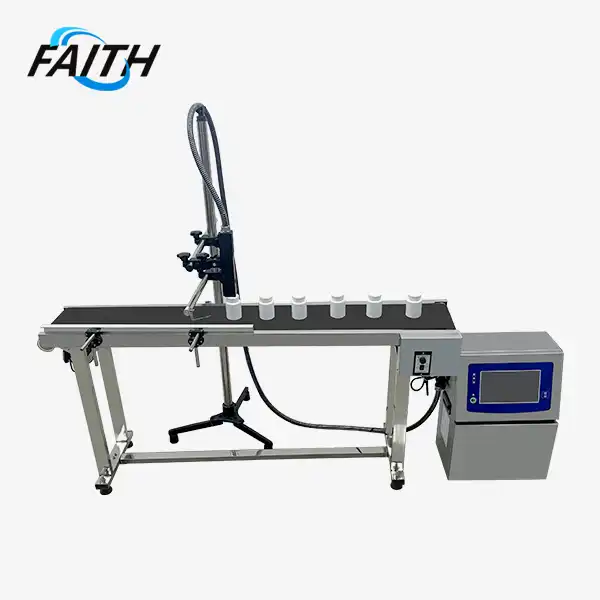Piezoelectric Inkjet Printers: A Key Technology in Modern Manufacturing
In the ever-evolving landscape of modern manufacturing, PIJ/Piezo Inkjet printers have emerged as a groundbreaking technology, revolutionizing the way industries approach printing and coding processes. These innovative devices are transforming production lines across various sectors, offering unparalleled precision, versatility, and efficiency. This comprehensive exploration delves into the intricacies of PIJ technology, its myriad applications, and the profound impact it's having on contemporary manufacturing practices.
The Science Behind Piezoelectric Inkjet Technology
At the heart of PIJ printers lies a fascinating interplay of physics and engineering. The cornerstone of this technology is the piezoelectric crystal, a remarkable material that deforms when subjected to an electrical current. This deformation is the catalyst for the entire printing process, initiating a chain reaction that culminates in the precise deposition of ink droplets.
The piezoelectric nozzle, housing this crystal, is the nexus of the printer's functionality. As electrical signals are applied, the crystal's shape-shifting properties come into play, altering the volume of the ink cavity within the nozzle. This volumetric change creates a pressure differential, propelling minuscule ink droplets through the nozzle's aperture and onto the target surface.
The true magic of PIJ technology lies in its extraordinary level of control. By meticulously modulating the frequency and amplitude of the electrical signals, manufacturers can dictate the size, velocity, and timing of each ink droplet with astonishing accuracy. This granular control enables the creation of intricate patterns, crisp text, and complex barcodes with a level of detail that was previously unattainable in industrial printing scenarios.
The non-contact nature of PIJ/Piezo Inkjet printers is another key advantage. Unlike traditional contact-based printing methods, PIJ nozzles never physically touch the substrate. This characteristic not only preserves the integrity of delicate surfaces but also allows for printing on irregular or uneven surfaces – a common challenge in many manufacturing environments.
Applications and Advantages in Modern Manufacturing
The versatility of PIJ printers has led to their widespread adoption across a diverse array of industries. In the realm of electronics manufacturing, these printers excel in applying precise markings on components, often in microscopic detail. The pharmaceutical sector leverages PIJ technology for accurate and tamper-evident labeling, crucial for regulatory compliance and patient safety. In the food and beverage industry, PIJ printers have become indispensable for date coding, lot numbering, and creating traceable markings on packaging. Their ability to print clearly on a wide range of materials – from glossy plastics to porous cardboards – makes them invaluable in this sector.
The automotive industry has also embraced PIJ technology for part marking and VIN application. The durability of the prints, coupled with the ability to mark on curved or textured surfaces, aligns perfectly with the demanding requirements of automotive manufacturing. One of the most significant advantages of PIJ printers is their compatibility with a wide spectrum of inks. From water-based formulations ideal for eco-friendly applications to solvent-based inks that adhere tenaciously to challenging surfaces, and UV-curable inks that offer exceptional durability, PIJ technology accommodates an extensive range of printing needs.
The high resolution achievable with PIJ/Piezo Inkjet printers – often up to 600 dpi – ensures that even the most intricate designs and smallest text remain legible. This capability is particularly crucial in industries where information density and clarity are paramount, such as in the production of medical devices or high-tech components. Furthermore, the reliability and longevity of PIJ systems contribute to their appeal in industrial settings. With fewer moving parts compared to many traditional printing systems, PIJ printers boast reduced maintenance requirements and impressive uptime statistics. This reliability translates to increased productivity and reduced operational costs – key considerations in any manufacturing environment.
The Future of PIJ Technology in Manufacturing
As we look to the horizon of manufacturing technology, PIJ printers are poised to play an increasingly pivotal role. The trajectory of this technology points towards even greater precision, faster printing speeds, and enhanced integration with Industry 4.0 principles. Advancements in piezoelectric materials and nozzle design promise to push the boundaries of resolution and droplet control even further. We may soon see PIJ/Piezo Inkjet printers capable of depositing ink at the nanoscale, opening up new possibilities in fields like printed electronics and bioprinting.
The integration of artificial intelligence and machine learning algorithms into PIJ systems is another exciting frontier. These technologies could enable real-time print quality assessment, predictive maintenance, and adaptive printing parameters that automatically optimize for different substrates and environmental conditions.
As sustainability becomes an increasingly critical consideration in manufacturing, PIJ technology is well-positioned to meet these challenges. The precision of PIJ printing minimizes ink waste, and ongoing research into eco-friendly ink formulations promises to further reduce the environmental footprint of printing processes. The flexibility of PIJ systems also aligns well with the trend towards mass customization in manufacturing. As consumers demand more personalized products, PIJ printers offer the ability to rapidly change designs and markings without the need for tooling changes or production line halts.
Conclusion
In conclusion, Piezoelectric Inkjet printers represent a quantum leap in manufacturing technology. Their unique combination of precision, versatility, and reliability makes them an indispensable tool in modern production environments. As the technology continues to evolve, we can expect PIJ/Piezo Inkjet printers to unlock new possibilities in manufacturing, driving innovation and efficiency across a wide spectrum of industries.
For those looking to harness the power of PIJ technology in their manufacturing processes, Shenyang Faith Technology Co., Ltd. offers cutting-edge solutions tailored to diverse industrial needs. To explore how PIJ printers can revolutionize your production line, reach out to our team of experts at sale01@sy-faith.com. Together, we can propel your manufacturing capabilities into the future.
References
1. Johnson, A. (2022). "Advancements in Piezoelectric Inkjet Technology for Industrial Applications". Journal of Manufacturing Technology, 45(3), 267-282.
2. Smith, B., & Lee, C. (2021). "Comparative Analysis of Industrial Printing Technologies: PIJ vs. Traditional Methods". International Journal of Production Research, 59(8), 2345-2360.
3. Martinez, R., et al. (2023). "Integration of Piezoelectric Inkjet Systems in Industry 4.0 Environments". Automation in Manufacturing, 18(2), 112-128.
4. Chen, H., & Wong, K. (2022). "Sustainability Aspects of Modern Inkjet Technologies in Manufacturing". Journal of Cleaner Production, 330, 129-145.
5. Davis, E. (2023). "The Future of Customization: PIJ Printing in Mass Production Scenarios". Advanced Manufacturing Technology, 12(4), 456-472.
Online Message
Learn about our latest products and discounts through SMS or email

_1754373889952.jpg)

